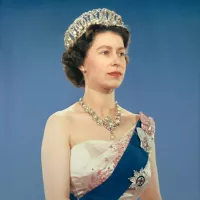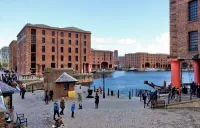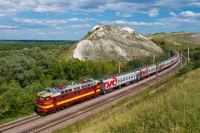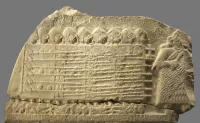Liverpool Street station, or London Liverpool Street, is a significant railway terminus and London Underground station situated in the northeastern part of the City of London. It serves as the terminus for several major lines, including the West Anglia Main Line (to Cambridge and Ely), the Great Eastern Main Line (to Norwich), and commuter trains heading to east London and various destinations in the East of England, such as the Weaver line of the London Overground. Additionally, it provides access to Stansted Airport via the Stansted Express service.
November 1909: Underground station renamed
On November 1, 1909, the underground station was renamed Liverpool Street.
July 1912: Opening of Central London Railway terminus
On July 28, 1912, the platforms that are now the deep-level Central line platforms 4 and 5 opened as the eastern terminus of the Central London Railway (CLR).
1936: Liverpool Street in Monopoly
In 1936, Liverpool Street was one of the four railway stations present on the British version of Monopoly, when Victor Watson redesigned the game for the British market.
September 1940: Liverpool Street station becomes a shelter during the Blitz
During heavy raids on the East End on 7 September 1940, Liverpool Street station was used as a shelter during the Blitz.
December 1946: Passenger line extended eastwards
On 4 December 1946, the passenger line was extended eastwards as part of the war-delayed London Passenger Transport Board's New Works Programme.
1951: Underground ticket hall added
In 1951, an Underground ticket hall was added at Liverpool Street station.
1974: Platform 3 still in use
By 1974, platform 3 at Liverpool Street station was still in use by terminating Metropolitan line trains from the west.
December 1991: Official opening of the redeveloped Liverpool Street
In December 1991, Queen Elizabeth II officially opened the redeveloped Liverpool Street station. A giant departures board was installed above the concourse at this time.
1991: Construction of additional entrance
In 1991, an additional entrance was constructed on the east side of Bishopsgate with a subway under the road.
April 1993: Bishopsgate bombing
On April 24, 1993, the Bishopsgate bombing caused about £250,000 of damage, primarily to the glass roof, and temporarily closed the station. The station re-opened on April 26, 1993.
1996: Liverpool Street featured in espionage film
In 1996, Liverpool Street station was used as a backdrop for the espionage film Mission: Impossible.
2003: Discontinuation of postal traffic system
In 2003, the postal traffic system at Liverpool Street station was discontinued.
2006: Liverpool Street featured in espionage film
In 2006, Liverpool Street station was used as a backdrop for the espionage film Stormbreaker.
November 2007: Replacement of the 'flapper' display board
In November 2007, the mechanical 'flapper' display board at Liverpool Street station, one of the last remaining at a British railway station, was replaced.
2010: Desire for interchange with Central line
Since the opening of the London Overground's Windrush line in 2010, an interchange with the Central line has been desired locally in neighbouring Shoreditch.
2011: Liverpool Street featured in crime drama
In 2011, Liverpool Street station was used as a backdrop for the crime drama The Shadow Line.
2014: University of Cambridge study
In 2014, a team from the University of Cambridge began conducting a study in a short, double track section of unused tunnel near the platforms where a newly built tunnel for Crossrail is situated almost two metres beneath.
2015: Excavation of the burials began
In early 2015 full-scale excavation of the burials began. It was estimated at 3,000 interments.
2015: Changes to passenger services
Since 2015, the Shenfield stopping service has been operated by Transport for London (first under the TfL Rail brand, now the Elizabeth line), and the Lea Valley Lines to Enfield Town, Cheshunt (via Seven Sisters) and Chingford are operated by London Overground.
March 2020: Liverpool Street becomes the third-busiest railway station in the UK
In the 12 months to 31 March 2020, immediately before travel restrictions were introduced as a result of the COVID-19 pandemic, Liverpool Street was the third-busiest railway station in the United Kingdom.
March 2021: Significant drop in passenger numbers due to the pandemic
In the 12 months to 31 March 2021, patronage at Liverpool Street station fell by 83% to 11.2 million entries and exits, as a result of the COVID-19 pandemic.
May 2022: Opening of the Elizabeth line
In May 2022, the opening of the Elizabeth line contributed to an increase in station usage.
2023: Liverpool Street ranked as the busiest station in the UK
In 2022 / 2023, Liverpool Street was ranked as the busiest station in the UK, with 80.4 million entries and exits.
Mentioned in this timeline

Elizabeth II reigned as Queen of the United Kingdom and...

Liverpool is a port city and metropolitan borough located in...

Trains are a connected series of vehicles traveling on railway...

War is defined as an armed conflict involving the organized...

Travel involves the movement of people between geographical locations using...
Time is the continuous irreversible progression of existence from past...
Trending

2 months ago Natalie Portman: Ahsoka Season 2 Theory, Miss Dior Essence, AI Actress Controversy.
2 months ago Sleep Token Accused of IG Shutdown Over Tattoo Copyright: Artist Claims Label Involved

26 days ago MacBook Pro M5 Issues Reported; Amazon Offers Black Friday Deals on MacBooks.

7 months ago Trae Young Trolls Knicks Fans During NBA Playoffs: A Playful Jab.

1 month ago Kris Jenner Ringleader as Khloé Kardashian Wears Care Bears Halloween Costume: Family Celebrates

1 month ago Russian Drone Attack Ignites Gas Tanker Blaze Near NATO Border After US Gas Deal
Popular

Candace Owens is an American conservative political commentator and author...

Ilhan Omar is an American politician currently serving as the...

XXXTentacion born Jahseh Dwayne Ricardo Onfroy was a controversial yet...

Tucker Carlson is an American conservative political commentator known for...

Bill Gates an American businessman and philanthropist revolutionized personal computing...

Charles James Charlie Kirk was a prominent American right-wing political...